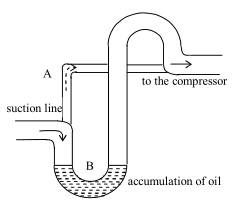High sulphur content increases the risk for corrosion and wear, particularly at low loads, and may c...
contribute to high- temperature deposit formation. The lubricating oil specification must be matched to this.
High vanadium content causes hot corrosion on exhaust valves particularly in combination with high
sodium content. The corrosion increases with increased temperatures (increased engine output).
High Conradson carbon may cause deposit formation in combustion chamber and exhaust system,
particularly at low engine output.
High content of asphaltenes may contribute to deposit formation in combustion chamber and exhaust
systems ( at low loads). Asphaltenes may under certain circumstances, precipitate from the fuel and block
filters and/or cause deposits in the fuel system. Precipitating asphaltenes may also cause excessive
centrifuge sludge.
Heavy fuels may contain up to 1% water at delivery. Water may also originate from the installation
bunker tanks. To avoid difficulties in the engine fuel injection system water must be removed.
Although low ignition quality produces long ignition delay, advancing the ignition timing makes things
only worse; fuel is injected at a lower compression temperature and this will produce even longer ignition
delay.
Aluminum + Silicon. Fuels may contain highly abrasive particles composed of aluminum and silicon
oxides known as "catalytic fines" from certain refining processes. If not removed by efficient fuel treatment,
wear down of high pressure fuel pumps, nozzles and cylinder liners in a few hours may expected.
参考解析:
1. When the engine output is increased, which component may cause corrosion on exhaust valves?
A. Sulphur content B. High water content
C. High vanadium content
D. High Conradson carbon
2. Which component may result in low temperature corrosion?
A. Sulphur content
B. Vanadium-sodium content
C. Conradson carbon content
D. Asphaltene content
3. Which component may result in serious wear-down of the cylinder liners?
A. Vanadium-sodium content
B. Conradson carbon
C. Asphaltene content
D. Aluminum & silicon
4. Which of the following components may make it necessary to shorten the discharging intervals when fuel oil is purified?
A. High ash content
B. High water contents
C. High asphahene content
D. High aluminum & silicon


 百度扫一扫练题
百度扫一扫练题
 关注千题库公众号
关注千题库公众号








